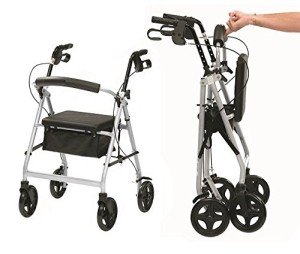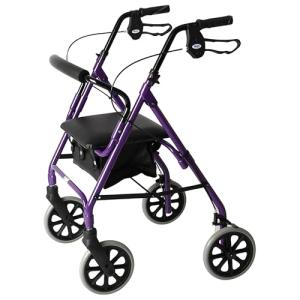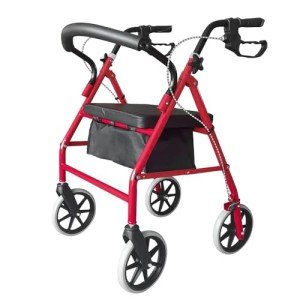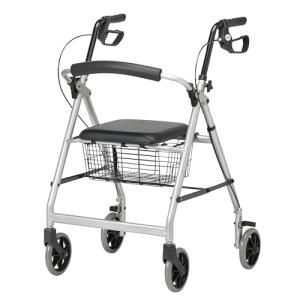As the global population ages, the demand for assistive devices has surged. Among these devices, the lightweight folding walker with a seat and brakes stands out as a popular choice for those seeking independence and mobility without compromising safety.
Overview of Lightweight Folding Walkers
Lightweight folding walkers are designed for individuals who may have limited mobility due to age, injury, or illness. These walkers provide much-needed support while also boasting the convenience of portability and ease of use. When equipped with a seat and brakes, they offer additional functionalities that make them exceptionally beneficial.
Key Features of Lightweight Folding Walkers
- Portability: The primary advantage of a folding walker is its ability to collapse easily, facilitating transport in vehicles and storage in limited space.
- Lightweight Design: Typically made from aluminum or similar materials, these walkers are light yet sturdy, making them easy to navigate and maneuver.
- Seating Option: The integrated seat provides a place to rest whenever mobility becomes overwhelming, which is especially beneficial during long outings.
- Braking System: Equipped with brakes, these walkers ensure safety when sitting down or stopping, giving users peace of mind while in use.
- Adjustable Height: Many models feature adjustable handles to accommodate users of varying heights, ensuring ergonomic comfort.
Benefits of Using a Lightweight Folding Walker with Seat and Brakes
Using a lightweight folding walker can significantly enhance an individual’s quality of life. Here are some benefits that come with this assistive device:
- Enhanced Mobility: Users can walk with increased confidence, knowing they have support.
- Reduction in Fatigue: The ability to sit down when needed alleviates fatigue, promoting longer outings without exhaustion.
- Safety First: The presence of brakes provides additional safety, reducing the risk of accidents and falls.
- Encouragement to Stay Active: With greater mobility options, individuals may be more inclined to engage in social activities and maintain an active lifestyle.
Choosing the Right Lightweight Folding Walker with Seat and Brakes
When selecting a walker, there are various factors to consider to ensure it meets individual needs. Below is a list of things to account for:
Factors to Consider
- Weight Capacity: It is vital to choose a walker that can safely support the user’s weight.
- Seat Height: The seat should be at a comfortable height for the user to sit down and stand up easily.
- Brake Type: Determine whether the hand brakes are easy to operate and whether they provide adequate stopping power.
- Storage Options: Many walkers come with baskets or pouches to carry personal items, which can be incredibly convenient.
- Folding Mechanism: Ensure the walker can be folded easily with one hand, if necessary.
Maintenance Tips for Lightweight Folding Walkers
To prolong the lifespan of a lightweight folding walker, regular maintenance is essential. Here are some tips:
- Routine Cleaning: Wipe down the walker with a damp cloth and mild soap to prevent dirt buildup.
- Check for Wear and Tear: Regularly inspect the frame, wheels, and brakes to identify any signs of damage.
- Ensure Proper Functionality: Test the brakes frequently to make sure they engage and disengage correctly.
- Adjust as Necessary: Height adjustments should be checked periodically to maintain user comfort.
Frequently Asked Questions (FAQs)
1. How do I know if a walker is the right size for me?
When standing alongside the walker, your elbows should be slightly bent when holding the handles. The handlebars should be at wrist height to ensure proper posture.
2. Can I use a folding walker on uneven surfaces?
While lightweight folding walkers can handle some uneven surfaces, safety may be compromised. Individuals are encouraged to use caution and assess the walking environment.
3. How do I fold and unfold the walker?
Most lightweight folding walkers come with a simple mechanism that involves pulling a lever or squeezing a button. Always refer to the manufacturer's instructions for specific folding techniques.
4. Is it safe to sit on the walker when I need a break?
Yes, as long as the walker is designed with a seat and has a reputable weight capacity. Ensure that the brakes are engaged before sitting down to prevent the walker from rolling.
5. How often should I replace my walker?
The lifespan of a walker can vary, but regular use may warrant replacement every few years or sooner if significant wear and tear are apparent.
Lightweight folding walkers with seats and brakes provide essential mobility support for individuals dealing with mobility challenges. Not only do they promote independence and confidence, but they also ensure safety and provide an opportunity for rest during physical activities. By understanding how to choose, use, and maintain these devices effectively, users can experience greater freedom in their daily lives, paving the way for a more active and engaged lifestyle.







